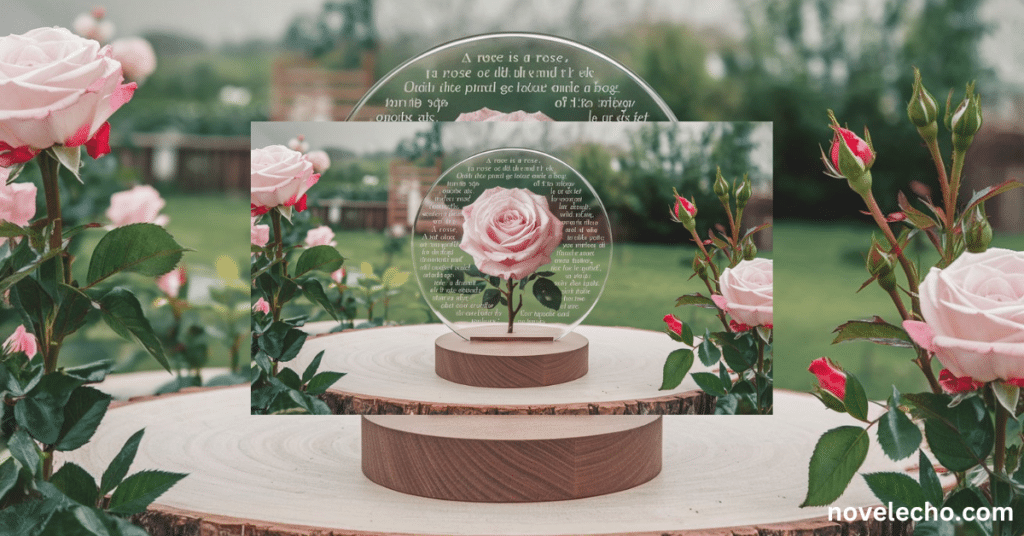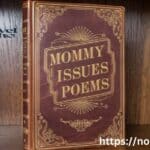Roses have long been an emblem of beauty, love, and life itself. Poets across centuries have used the rose as a muse, capturing its essence in words. Through countless rose poems, writers have explored its vibrant existence and quiet strength, symbolizing the delicate balance between beauty and resilience—a theme often celebrated in poetry.
In this article, we’ll dive deep into the world of Rose Poems, showcasing various works that not only reflect the flower’s physical allure but also its metaphorical significance.
The Symbolism of Roses in Poetry
Roses have been a central symbol in many poetic traditions, from classical Persian poetry to modern verse. They represent the convergence of beauty and impermanence, evoking both admiration and melancholy.
In different colors, roses take on additional meanings: red for passion, white for purity, and yellow for friendship. In poetry, the rose’s vibrant living essence stands as a metaphor for the cycles of life, love, and even death. Its quiet strength—the ability to endure despite its delicate petals—resonates deeply with human experiences.
Now, let’s explore some notable rose-themed poetry, each offering its unique interpretation of this timeless bloom.
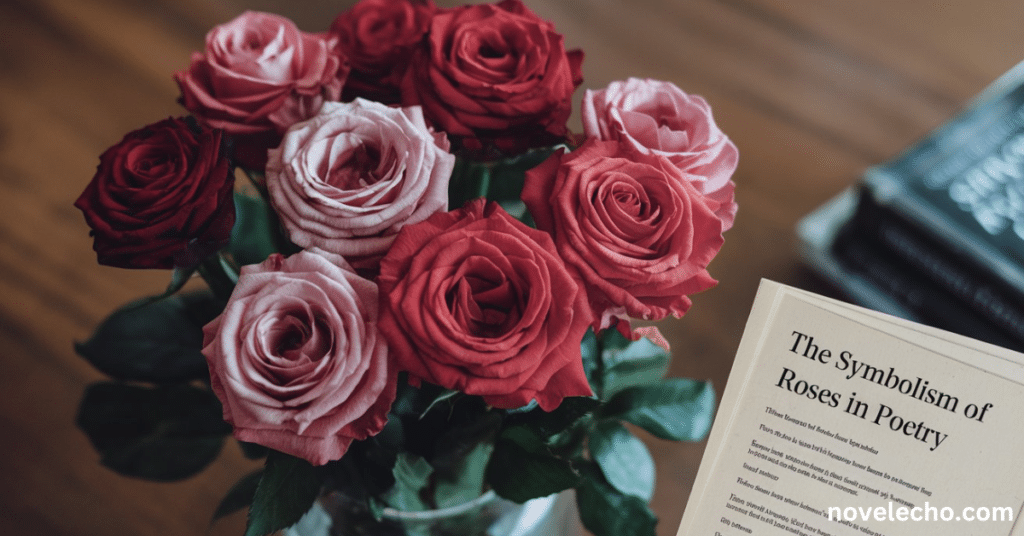
Rose Reverie
The Poem
The rose blooms with softest grace,
Yet time it knows, none can erase.
A petal falls, and in its flight,
Whispers the secret of the night.
It lives to bloom, it blooms to die,
Underneath the endless sky.
Its fragrance fades, yet lingers long,
Like echoes of a fading song.
Summary of the Poem
In Rose Reverie, the poet reflects on the dual nature of the rose. The rose, with its fleeting beauty, becomes a metaphor for the transient nature of life. The falling petal, symbolic of time’s passage, reminds us that all things, no matter how beautiful, are subject to decay. The poem uses simple imagery to illustrate the balance between vibrant existence and inevitable decline, embodying the rose’s symbolic beauty.
Inspirations Behind the Poem
The inspiration behind Rose Reverie lies in the age-old human contemplation of life’s impermanence. The poet may have drawn from personal reflections on aging or loss, mirroring the rose’s journey from bloom to wilt. The quiet strength of the rose, resilient yet fragile, becomes a powerful metaphor for human existence.
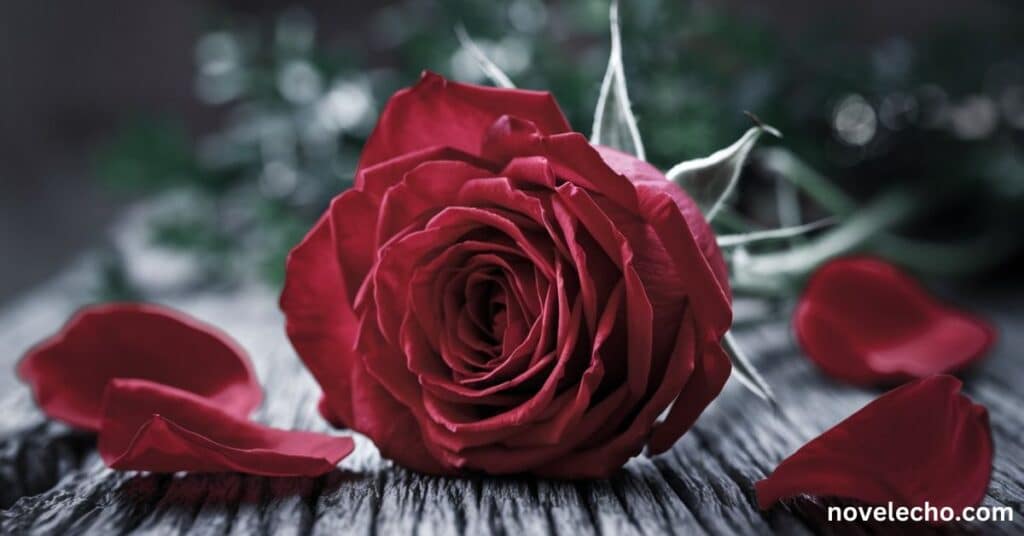
A Rose’s Tale
The Poem
I was born in the dew of dawn,
With petals soft as silk drawn.
Yet as the day grew long and bright,
My colors dimmed, then left the light.
But still I stand, my stem unbowed,
Though time has wrapped me in a shroud.
I lived, I loved, I grew with grace—
A rose’s tale, time can’t erase.
Summary of the Poem
A Rose’s Tale gives voice to the rose itself, personifying it as a speaker reflecting on its own life. The poem explores the rose’s journey from vibrant living in its prime to its quiet, inevitable fading. Despite the loss of its vivid life, the rose retains its quiet strength, standing resilient in the face of time. The poem speaks to the enduring spirit of both the rose and the human soul.
Inspirations Behind the Poem
The poet draws on the rose’s symbolic power, perhaps reflecting on the resilience of the human spirit. The rose’s journey, from fresh bloom to faded memory, mirrors life’s ups and downs, its joys and sorrows. The poet may have been inspired by the contrast between the rose’s outward fragility and its inner strength, a “resilient rose” withstanding the trials of time.
Ode to the Roses
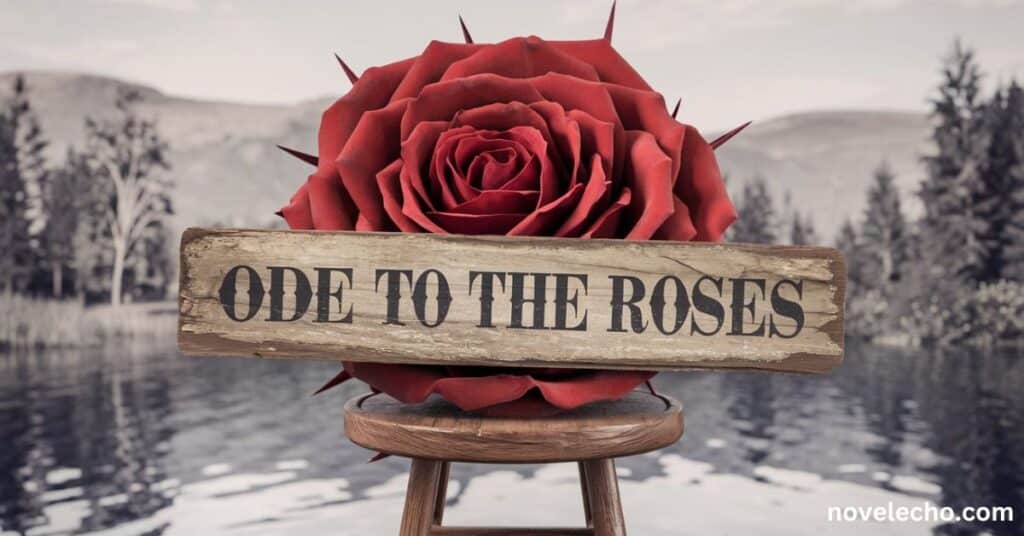
The Poem
O roses, with your petals bright,
In gardens glowing with the light.
You are nature’s finest bloom,
And still, you dance in quiet gloom.
Your thorns may prick, your blooms may fade,
But in our hearts, your place is made.
A symbol of both love and pain,
O roses, bloom and bloom again.
Summary of the Poem
In Ode to the Roses, the poet celebrates the rose’s beauty while acknowledging its thorns, emphasizing both its allure and its dangers. The poem’s theme revolves around the dichotomy of love—its pleasures and its pains—mirroring the rose’s beauty and thorns. The rose’s symbolic beauty lies in its imperfection, with the thorns adding depth to its charm.
Inspirations Behind the Poem
The poet likely found inspiration in the universal experience of love, with its mix of joy and heartache. The rose, a classic symbol of love, serves as the perfect metaphor for this emotional complexity.
The poet may have drawn from personal experiences of love and loss, finding in the rose a fitting symbol for the emotional highs and lows of human connection.
The Universal Blossom
The Poem
In every land, in every tongue,
The rose’s song is always sung.
It speaks of love, it speaks of strife,
A bloom that mirrors every life.
Its petals soft, its thorns so sharp,
It plays for us a timeless harp.
The universal blossom true,
Forever old, forever new.
Summary of the Poem
The Universal Blossom celebrates the rose as a global symbol, uniting people across cultures and traditions. The poem emphasizes the rose’s role as a universal flower, reflecting shared human experiences—love, loss, beauty, and pain. The rose’s timeless appeal, its vibrant existence, and its quiet strength speak to its place as a universal emblem of life.
Inspirations Behind the Poem
The inspiration behind The Universal Blossom likely stems from the poet’s observation of the rose’s significance in diverse cultural and literary traditions. From ancient Persian poetry to modern works, the rose has transcended geographical boundaries, becoming a symbol for love, beauty, and resilience across the world. The poem echoes this sentiment, celebrating the rose’s ability to unite people through shared emotions and experiences.
Roses in Eternal Dance
The Poem

In moonlit glow and morning’s glance,
The roses move in endless dance.
With petals twirling, never still,
They circle ‘round with graceful will.
In every bloom, in every sway,
The roses sing of yesterday.
Their dance eternal, full of grace,
A lasting trace in time and space.
Summary of the Poem
Roses in Eternal Dance paints a picture of roses in perpetual motion, symbolizing the cycles of life, love, and renewal. The poem emphasizes the rose’s ability to capture both the fleeting and eternal aspects of existence. The eternal dance of the roses mirrors the constant ebb and flow of life, where beauty and decay are inextricably linked.
Inspirations Behind the Poem
The poet likely drew inspiration from nature’s cycles, where birth, growth, decay, and rebirth are intertwined. The idea of an “eternal dance” reflects the timeless waltz of life and death, where the rose’s beauty remains a constant presence. The poem’s use of movement—an “everlasting waltz” or “eternal tango”—further emphasizes the dynamic presence of the rose in the natural world.
Roses in Other Poetry Traditions
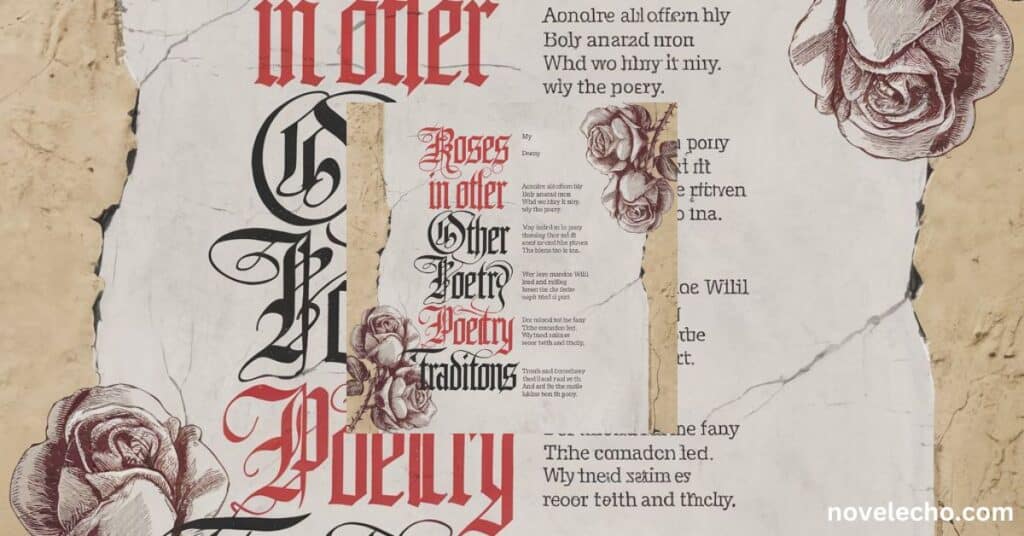
Beyond individual poems roses have a long-standing place in various poetic traditions. From the structured beauty of the Italian sonnet, such as the Petrarchan sonnet, to modern free verse, the rose has been celebrated as a symbol of love, beauty, and transience.
In classical poetry, the rose often stood for idealized love and beauty, while in Romanticism, it became a symbol of the individual’s connection to nature. In modern poetry, roses are often depicted with a more complex lens—acknowledging their thorns and imperfections alongside their beauty. The geometric poetry form, including the diamante form, has also been used to encapsulate the symmetrical elegance of the rose, a natural masterpiece.
Final Thoughts on Rose Poems
The enduring power of the rose in poetry speaks to its vibrant existence, quiet strength, and symbolic beauty. Through centuries, poets have drawn inspiration from this resilient flower, capturing its essence in verse. From the universal blossom to roses in eternal dance, the rose continues to symbolize the delicate balance between life’s fragility and strength.
In these poems, the rose isn’t just a flower—it’s nature’s artwork, a metaphor for love, loss, and the cycles that govern all living things. Whether through a structured sonnet or free-form verse, the rose remains an eternal muse for poets, an emblem of beauty and resilience intertwined in life’s eternal dance.

David Jonus is an experienced writer with a deep passion for the world of literature. As the voice behind Novel Echo, David explores the beauty of words, offering readers inspiring guides, timeless poetry, and thought-provoking reflections. With a focus on celebrating the magic of storytelling, David crafts articles that resonate with both seasoned and aspiring literature lovers.

